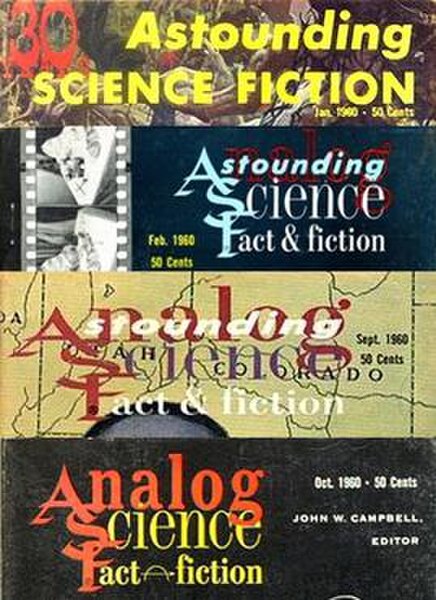Sixth Column, also known under the title The Day After Tomorrow, is a science fiction novel by American writer Robert A. Heinlein, based on a then-unpublished story by editor John W. Campbell, and set in a United States that has been conquered by the PanAsians, who are asserted to be neither Japanese nor Chinese. Originally published as a serial in Astounding Science Fiction it was published in hardcover in 1949. It is most known for its race-based premise.
First edition cover.
Analog Science Fiction and Fact
Analog Science Fiction and Fact is an American science fiction magazine published under various titles since 1930. Originally titled Astounding Stories of Super-Science, the first issue was dated January 1930, published by William Clayton, and edited by Harry Bates. Clayton went bankrupt in 1933 and the magazine was sold to Street & Smith. The new editor was F. Orlin Tremaine, who soon made Astounding the leading magazine in the nascent pulp science fiction field, publishing well-regarded stories such as Jack Williamson's Legion of Space and John W. Campbell's "Twilight". At the end of 1937, Campbell took over editorial duties under Tremaine's supervision, and the following year Tremaine was let go, giving Campbell more independence. Over the next few years Campbell published many stories that became classics in the field, including Isaac Asimov's Foundation series, A. E. van Vogt's Slan, and several novels and stories by Robert A. Heinlein. The period beginning with Campbell's editorship is often referred to as the Golden Age of Science Fiction.

First issue of Astounding Stories of Super-Science, dated January 1930. The cover art is by Hans Waldemar Wessolowski.
The changes in layout during 1960, showing the January, February, September and October title layouts
The cover of the March 1933 Astounding, by Wesso, originally painted to illustrate E.E. Smith's Triplanetary
A sketch of John W. Campbell from 1932





